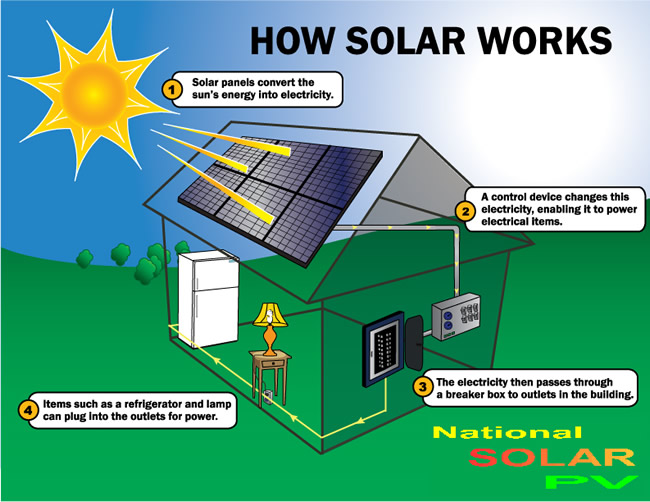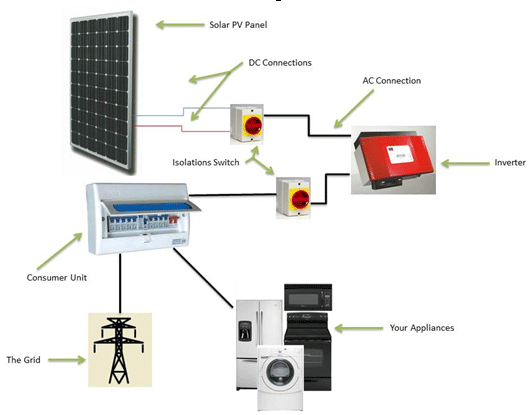How Solar Panels Work
Photovoltaic (PV) literally means “light” and “electric.” Photovoltaic technologies are used to generate solar electricity by using solar cells packaged in photovoltaic modules.
- The most important components of a PV cell are the two layers of semiconductor material. Sunlight strikes a solar PV panel. Inside that panel are one or more semi conductors that facilitate the creation of an electric current from sunlight.
- That electricity is sent through wiring to an inverter, where the direct current (DC) is converted into alternating current (AC) compatible with your home appliances and the utility grid.
- From the inverter, the AC voltage passes through the breaker panel, where it is sent one of two places – either into the home to power electrical devices or to the utility meter..
- The utility meter measures the amount of solar electricity produced as it is sent to the National grid for use somewhere else. For homes with solar power systems, this meter counts in both directions. That is, when the solar panels are sending energy to the grid, the meter rolls backward, and at night when the grid is providing power to the home, it rolls forward.
All PV cells have two layers of semi-conductors, one positively charged and one negatively charged. When light shines on the semi-conductor, the electric field across the junction between these two layers causes electricity to flow. (The greater the intensity of sun light the greater the flow of electricity). The panels produce direct current (DC) which is converted to alternating current (AC) by an inverter so it can be used by appliances in the home. These systems can either be connected to the national electricity grid or off grid systems. Of all the micro-renewable energy technologies available, photovoltaic is:
- The most straight forward to install and is an easy system to maintain
- Has zero noise, Is pollution-free and environment-friendly and Is eligible for government incentives, from savings on energy bills and from energy sales
In order to use the energy generated by the PV system, it needs to be connected to the mains electrical supply via an electrical panel which is supplied by National Solar PV.
The panel contains a number of items including:
- The inverter(s) which convert from (DC) direct current to grid synchronised AC(alternate current)
- Safety fuses and isolator switches, for the input from the PV panels, and output to the grid
- Various meter’s for measuring the energy generated by the system, the voltage and current coming from the PV system.


